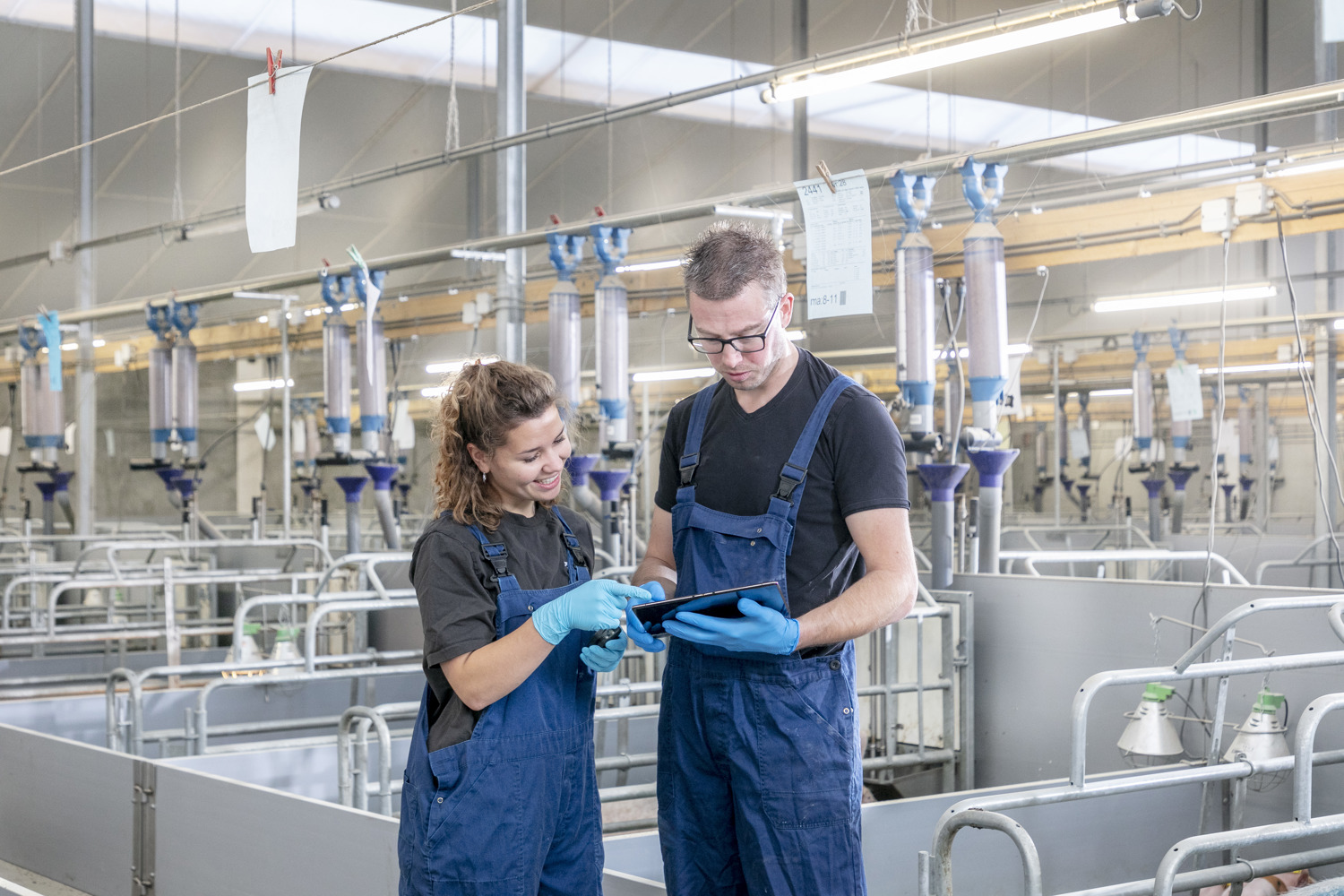
Data drives on-farm decisions
In the farm’s lactating barn, feed activators are installed in each farrowing pen, permitting the sow to self-select when she wants to receive a portion of feed. When she moves her snout up and presses a small button, feed is automatically dispensed. The feeding system has the ability to randomise two different dietary treatments across the barn, allowing researchers to precisely monitor intake of the different treatments as well as the feed intake patterns of sows in the farrowing pens. They can also monitor the piglets' body weight and growth over the lactation period. The weighing scales for sows and piglets are equipped with a Bluetooth connection and a link to a data platform where researchers can log on remotely and follow their studies.
In the gestating barn, top-dress dosing equipment installed at the feeding station offers adding and mixing capabilities. This functionality allows different feed additives to be added to the sows’ diets to support the animals’ specific nutritional requirements based on the stage of gestation – for example, we can add nutritional technologies that contribute to the growth of mammary tissue during late gestation. A weighing bridge can automatically weigh sows every time they leave the feeding station, allowing researchers to track body weight development in real time.
In the weaning barn as well as the grower-finish barns, new computer-controlled feeding systems and water lines deliver accurate reporting on intake and provide the option to randomise different feeds and water treatments throughout the farm. Sensors in the feed bins automatically refill feed as needed, and the amount is precisely weighed before going into the feed line.
These renovations give us access to reliable, accurate, and direct on-farm results, that are connected straight into the cloud, where researchers can follow their studies on-demand from their home offices or anywhere else.









